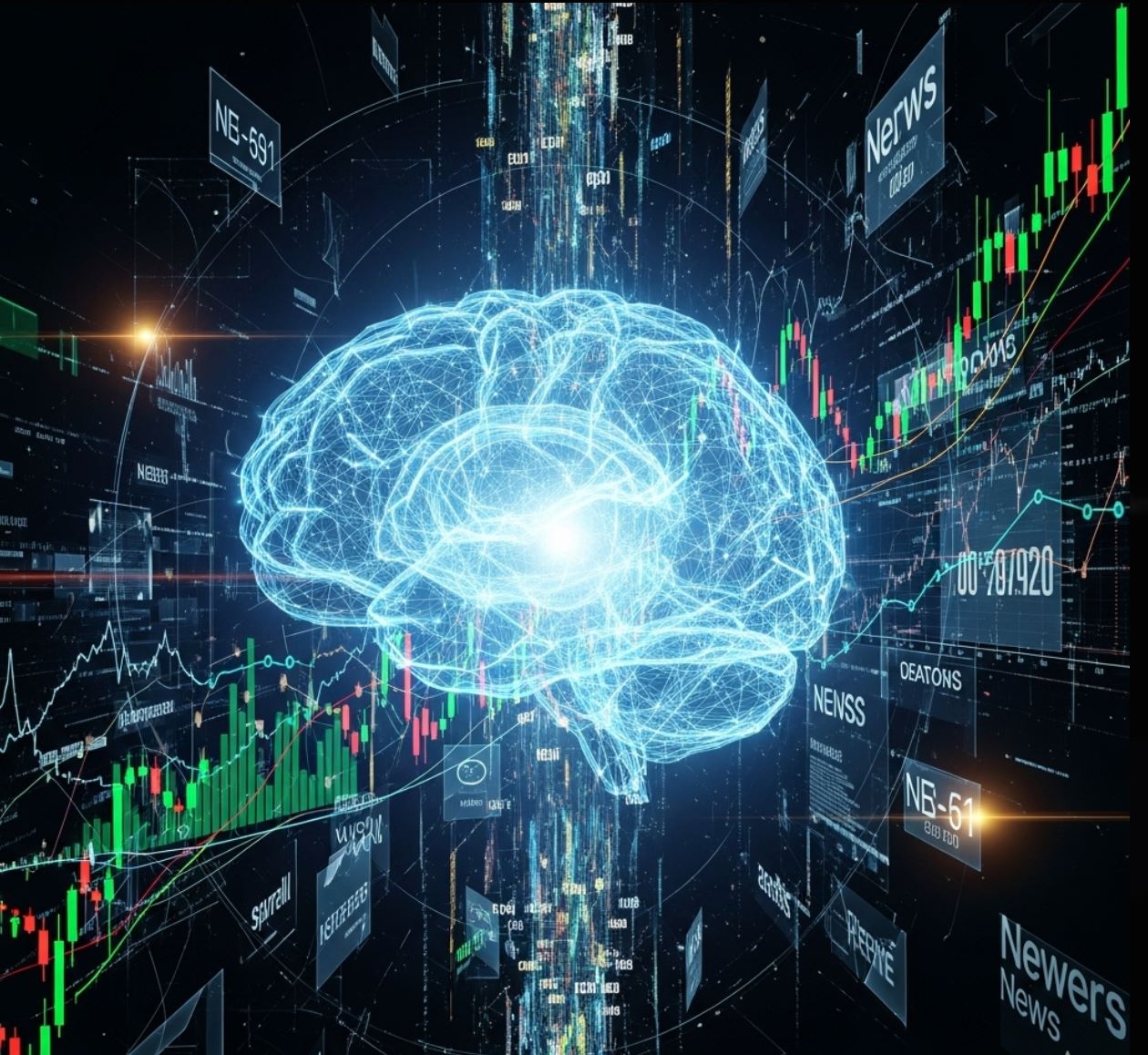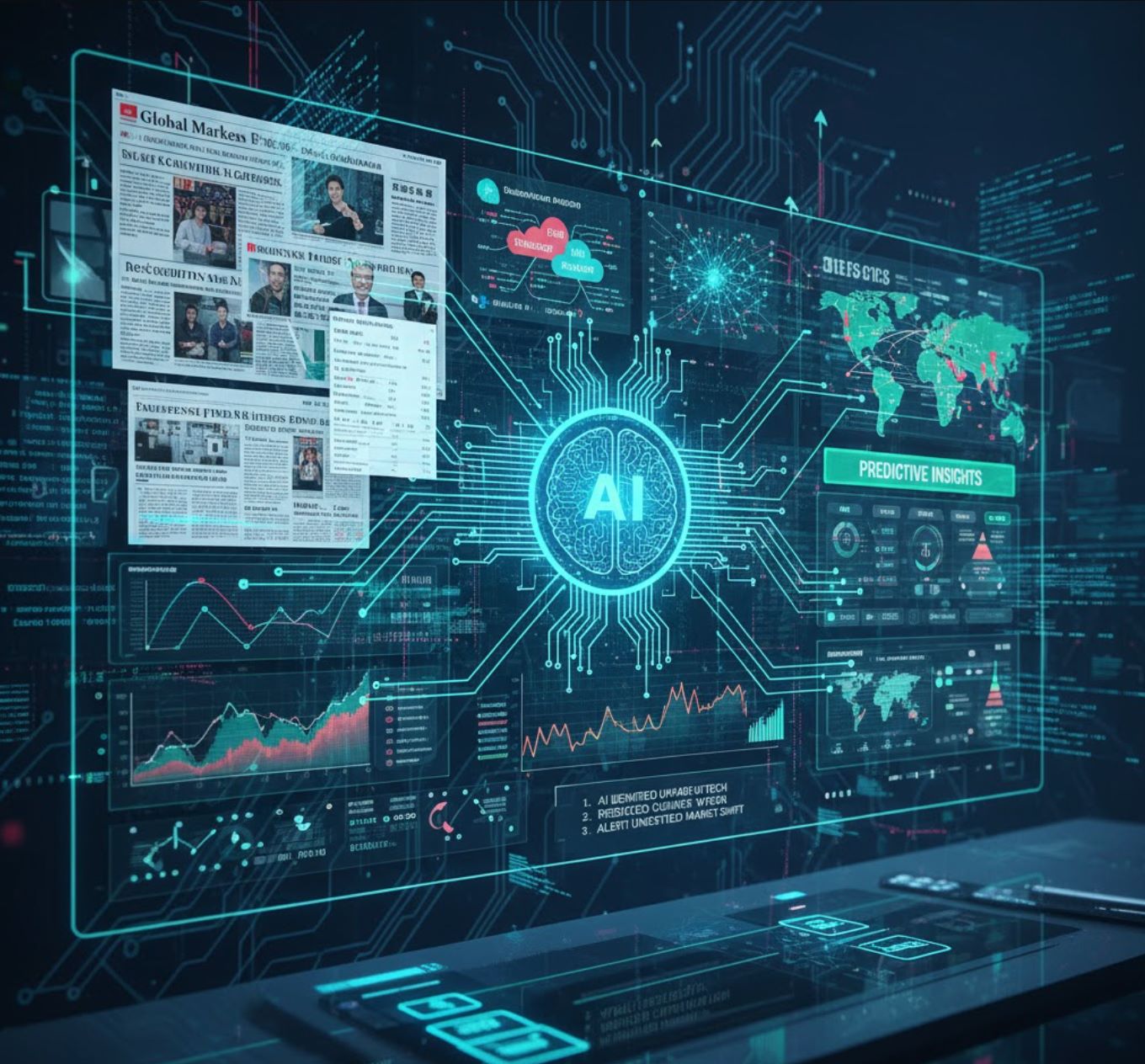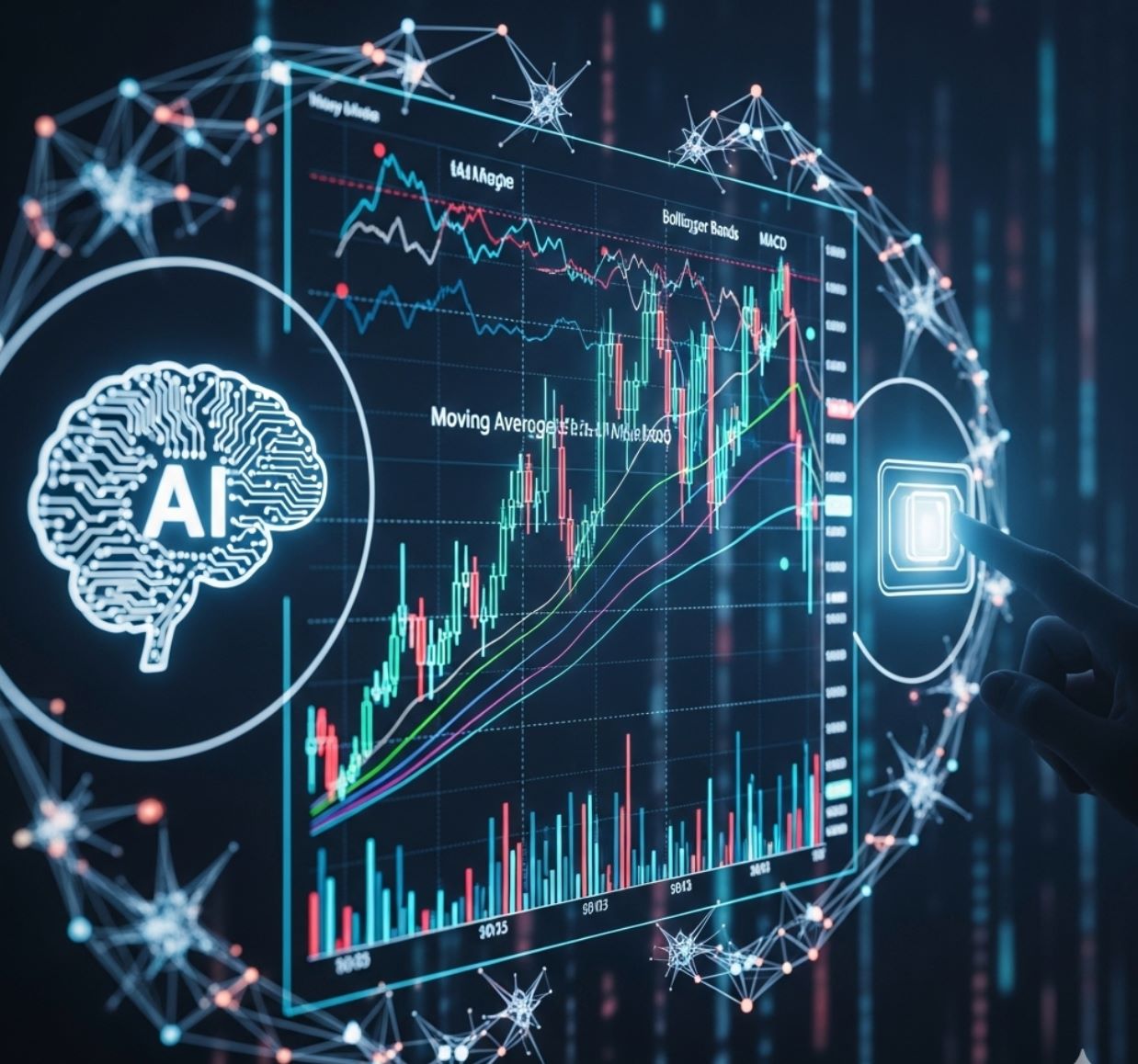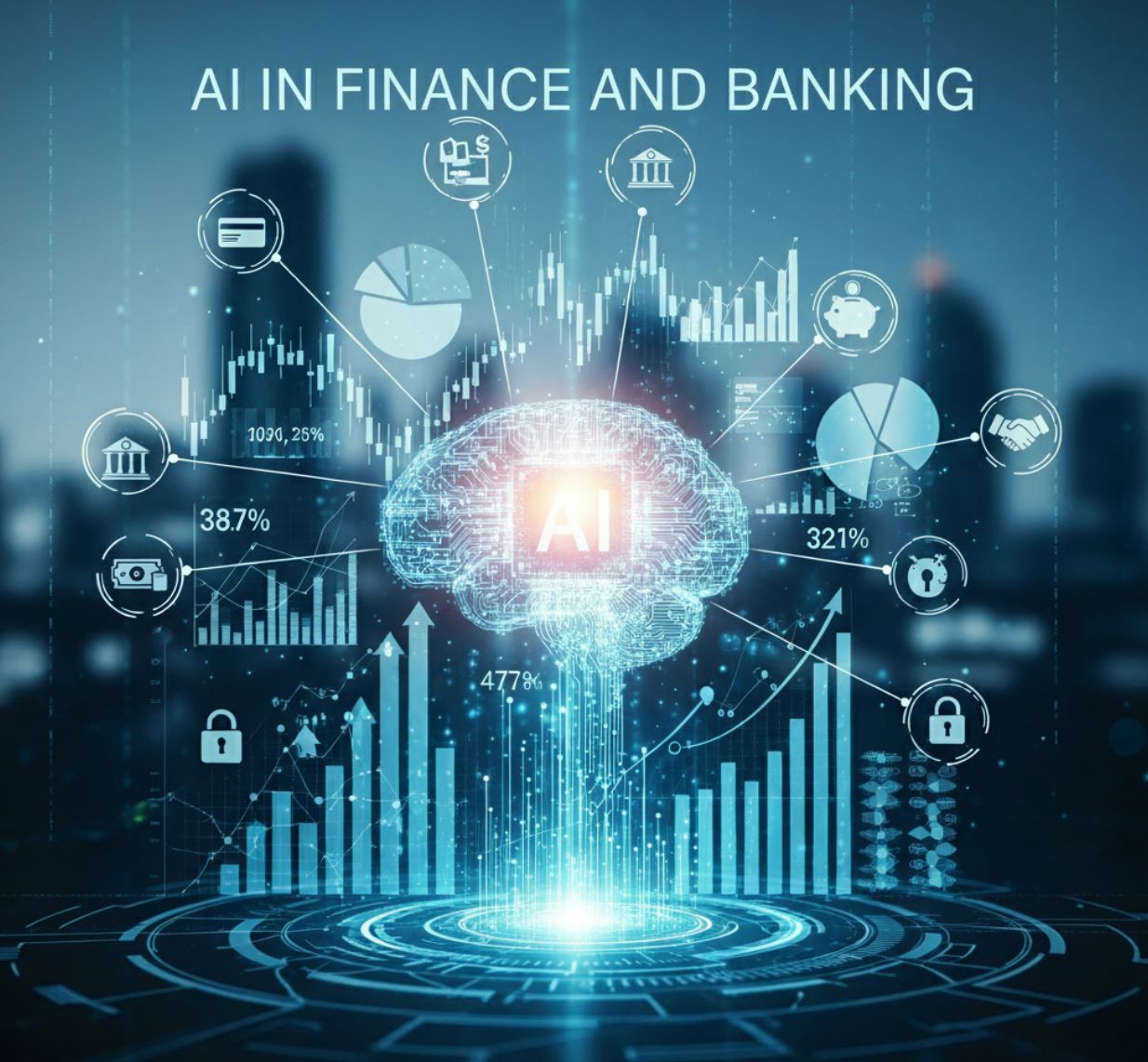AI Analyzes Potential Stocks
Artificial intelligence (AI) is transforming the way investors analyze potential stocks in the financial market. By processing vast amounts of data, identifying trends, and predicting market movements, AI helps investors make more accurate decisions and reduce risks. This technology enables both individual and institutional investors to seize opportunities effectively in a volatile market environment.
Do you want to know how AI analyzes potential stocks? Let's find out the details with INVIAI in this article!
Artificial intelligence (AI) is revolutionizing how investors evaluate stocks. By processing vast amounts of data – from historical prices and financial reports to news and social media – AI-driven models can scan thousands of companies and flag those with strong signals.
In recent years, stock market forecasting has "gained significant attention" as machine learning (ML) and deep learning (DL) algorithms deliver "sophisticated, data-driven approaches that can analyze vast amounts of financial data". Unlike traditional methods based on human judgment and simple statistics, AI can spot complex patterns and sentiment that would be impossible to track manually.
This means AI can analyze potential stocks by quickly identifying trends, calculating risk factors, and even anticipating market shifts before they happen.
How AI Models Analyze Stocks
AI stock analysis combines diverse data sources and advanced algorithms. Key inputs include:
Historical Market Data
Fundamental Data
News and Social Sentiment
Alternative Data
Once data is gathered, AI pipelines typically perform these steps:
Data Preprocessing
Clean and normalize data, handle missing values, and engineer features (e.g. ratios, indicators) to make raw data usable.
Model Training
Use ML/DL models – such as support vector machines, random forests, gradient-boosting, or neural networks (LSTM, CNN) – to learn patterns. Deep learning excels at complex, nonlinear relationships in price charts.
Modern approaches even leverage large language models (LLMs) like GPT-4 to extract semantic meaning from text.
Validation and Backtesting
Evaluate models on past data to estimate accuracy (e.g. by Sharpe ratio, precision, mean error). AI researchers stress the importance of out-of-sample testing to avoid overfitting.
Deployment
Apply the model to live data for stock ranking or portfolio suggestions, often with automated alerts.
By blending these inputs and methods, AI systems can analyze potential stocks holistically. For example, one recent study showed that combining traditional technical indicators with neural networks uncovered hidden trading signals that pure human analysis missed.
A technical AI model achieved nearly 1978% cumulative returns through a simulated strategy by optimizing deep learning forecasts.
— Recent AI Trading Research Study
These innovations highlight how AI's algorithmic "mind" can interpret financial statements and price charts in tandem, often finding opportunities that slip past human traders.

Key Benefits of AI in Stock Selection
AI brings several advantages over conventional stock analysis:
Speed and Scale
AI combs through thousands of stocks and data feeds in seconds.
- 95% faster research retrieval (JPMorgan)
- Processes millions of data points instantly
- Analyzes thousands of stocks simultaneously
Data Depth
Humans can only digest a small slice of available information. AI can ingest entire earnings transcripts, all-day news coverage, and millions of social posts instantly.
- Processes structured and unstructured data
- Real-time news sentiment monitoring
- Unusual volume spike detection
Pattern Recognition
Complex algorithms spot subtle, nonlinear trends that elude basic analysis.
- Detects cyclical patterns
- Identifies anomaly clusters
- Discovers hidden correlations
Sentiment Analysis
AI excels at scanning text and automatically performing sentiment analysis on Twitter or newswire to gauge public mood.
- Real-time social media monitoring
- News headline sentiment scoring
- Market mood quantification
These benefits are already materializing. One fintech report notes that AI-powered trading platforms enable algorithmic trading to execute millions of trades per day – something only possible because AI can process market data and make split-second decisions far beyond human capability.
In effect, AI can analyze thousands of potential stocks in parallel, flagging those with the strongest multi-factor scores for further review.

Real-World Examples and Performance
AI-driven stock analysis is moving from theory into practice across academia and industry:
Stanford's AI Analyst Study
A high-profile study by Stanford researchers simulated an "AI analyst" that rebalanced real mutual fund portfolios from 1990–2020 using only public data.
Traditional Alpha
- ~$2.8M alpha per quarter
- Manual analysis limitations
- Limited data processing
AI-Augmented Alpha
- ~$17.1M additional alpha per quarter
- 170 variables correlation analysis
- Comprehensive data digestion
JPMorgan and Wall Street Implementation
Major banks are now embedding AI into their investment desks. JPMorgan's asset managers report that new AI tools help their advisors handle client requests "up to 95% faster" by pre-loading relevant market data and research.
- JPMorgan: 95% faster advisor response times
- Goldman Sachs: AI copilots for traders
- Morgan Stanley: Chatbots for wealth managers
- Real-time market data and research pre-loading
During a recent market swoon, JPMorgan's AI assistants quickly pulled trading-history data and news for each client, enabling advisors to give timely advice. The result is that portfolio managers and analysts spend less time on routine data gathering and more on strategy.
FINRA Regulatory Report
The Financial Industry Regulatory Authority (FINRA) notes that broker-dealers increasingly use AI to assist in trading and portfolio management.
Satellite Imagery
Social Media
Pattern Recognition
The FINRA report confirms that investment processes like account management, portfolio optimization, and trading are all being transformed by AI tools.
Fintech Tools for Retail Investors
Beyond Wall Street, start-ups offer AI-powered stock screening tools to everyday investors. These platforms claim to rank or pick stocks using algorithms trained on fundamental and technical data.
- AI apps can scan company logos or products to fetch performance metrics instantly
- Automated stock screening based on multiple criteria
- Real-time alerts for high-potential stocks
- Democratized access to institutional-grade analysis
While retail tools vary in quality, their growth indicates the broad appeal of AI analysis. Overall, institutions and individuals alike are starting to rely on AI to flag high-potential stocks for deeper human review.

Challenges and Limitations
Despite its promise, AI stock analysis is not infallible. Important caveats include:
Market Unpredictability
Financial markets are noisy and subject to random shocks (news events, policy changes, even rumors). Even the best AI can only predict based on patterns seen in data – unforeseen crises or black-swan events can still foil models.
Data Quality and Bias
AI models are only as good as their training data. Poor-quality or biased data can lead to bad predictions.
- Bull market training may fail in bear markets
- Overfitting to historical patterns
- Survivorship bias in financial databases
- Companies that went bankrupt drop off records
"Black Box" Issues
Complex models (especially deep neural nets or ensembles) can be opaque. It can be hard to explain why an AI picked a certain stock.
Overreliance and Herd Behavior
Some experts warn of a feedback loop where many investors using similar AI tools could inadvertently reinforce trends (momentum) or crowd into the same trades, increasing volatility.
If all investors adopt the same AI analyst, much of the advantage would go away.
— Stanford Researchers
In other words, AI might gradually become just another market factor, eroding its own edge.
Regulatory and Ethical Concerns
Regulators are watching. Organizations like FINRA emphasize that AI does not remove a firm's obligation to comply with securities laws.
- Data privacy compliance requirements
- Model governance and validation
- Algorithmic trading oversight
- Lack of formal AI policies in many institutions

The Future of AI in Stock Analysis
Looking ahead, AI's role in finance is poised to grow even more powerful:
Advanced Machine Learning and LLMs
Research is exploring multi-agent AI systems where different algorithms specialize in fundamental analysis, sentiment analysis, and risk assessment before pooling their insights.
- BlackRock's "AlphaAgents" specialized AI systems
- AI agents debating buy/sell decisions
- LLMs digesting complex reports automatically
Automation and Personalization
AI-driven robo-advisors are already customizing portfolios for retail clients. Personal AI assistants will continuously monitor investments and market news.
- Personalized investment monitoring
- Automated opportunity alerts
- JPMorgan: 450 to 1,000+ AI use-cases planned
Global Adoption
Financial firms worldwide – from New York to Shanghai – are investing heavily in AI.
- 85% of European firms piloting AI tools
- Asian hedge funds using 24/7 AI trading
- Cross-timezone market analysis
Regulatory Evolution
As AI tools proliferate, regulators and exchanges will likely develop clearer rules.
- FINRA and ESMA studying AI impacts
- Industry standards for AI model validation
- Enhanced transparency requirements
Overall, AI's integration into stock analysis resembles the evolution of big data or electronic trading: initially experimental, now mainstream. The technology is still maturing, but its ability to continuously learn and adapt means it will be an indispensable part of finance.

Conclusion
In conclusion, AI analyzes potential stocks by harnessing machine learning, neural networks, and massive data streams to uncover opportunities that human analysts might miss.
Data Transformation
Speed Advantage
Proven Results
AI in stock analysis is a young field, but it's moving fast. For anyone curious about potential stocks, AI offers tools to sift through the noise and highlight the most promising names.
With careful implementation and a balanced perspective, AI can help both professionals and individual investors make more informed decisions in today's data-driven markets.





